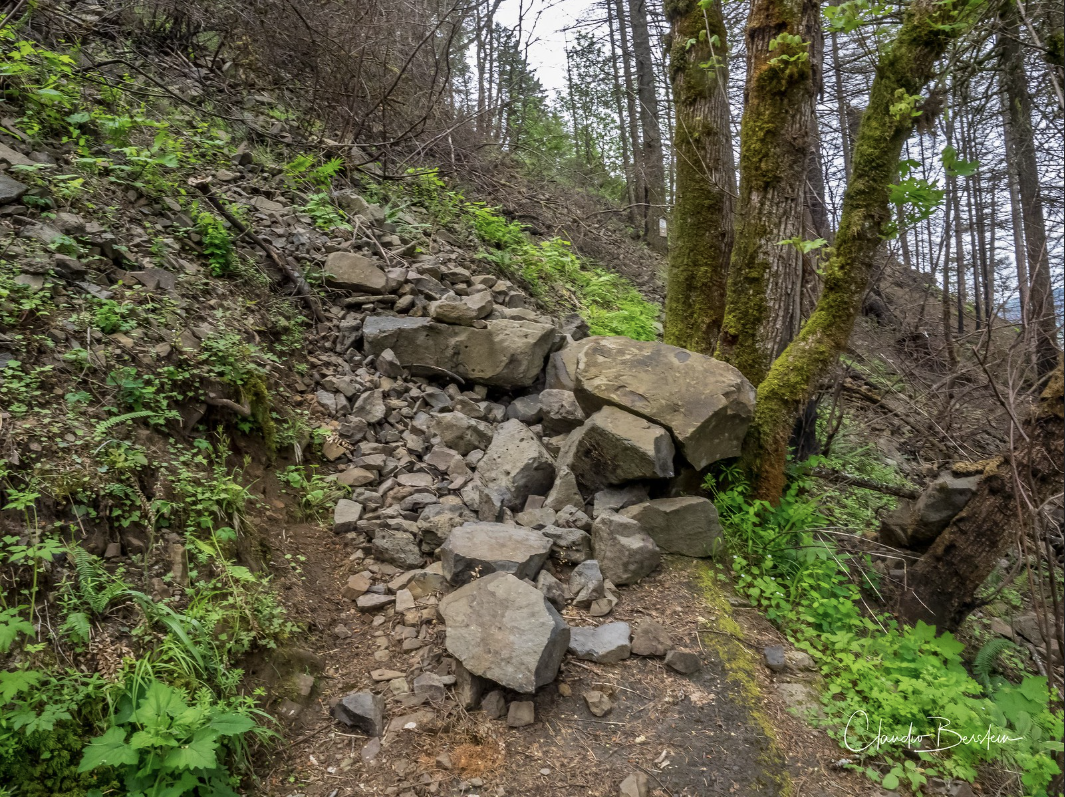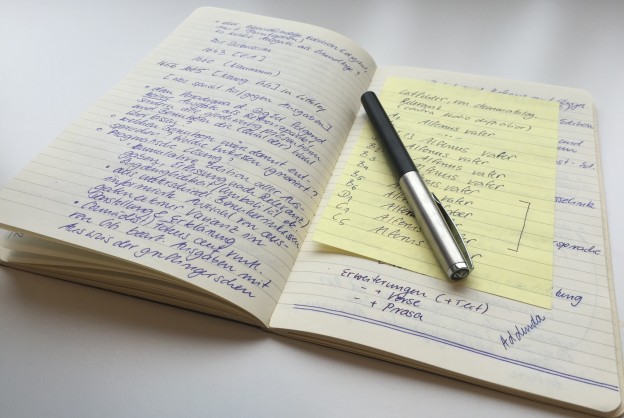Whoops! It’s July, and the academic year has come to an end. Yet another round. This time, the road was bumpy, and the destination wasn’t always clear!
After a longer sick leave, I returned to work in August 2024 at 20% capacity, gradually increasing to 40% by the end of the year. My capacity is now at 60%, and it will remain there for a while before I can consider raising it again.
I’m not going to go into detail about what happened;1 suffice to say my body and mind were at a breaking point after years of chronic illness, mental unrest and working 100% while giving 150%. That’s not sustainable.
I had to reduce everything drastically. Not just working fewer hours (100% equals 37.5 hrs weekly, incl. lunch breaks, here in Norway), but withdrawing from projects, responsibilities, and interactions. I had to withdraw from everything except one project: the Sustainable Digital Scholarly Editions skills hub and network here at the University of Oslo. This was really hard for me: I know I have a tendency to overcommit, but now I had to really shut myself off. I had great support from work, my bosses and colleagues; still, the process was challenging – and sad. I love my work, including the small research projects I have, my collaborations and partnerships with other researchers and colleagues, my involvement in associations and steering committees, as well as my work with organisations and strategic development. This all had to go – at least temporarily.
So, I stopped taking ‘work’ home with me by creating other outlets for my creativity, my investigative drive and my need for diving into details and immersing myself in a task. I started embroidery, specifically cross-stitching colourful, elaborate patterns and images. You do this by following printed patterns made up of tiny symbols or colours, which translate into even tinier stitches. You need complete focus, good lighting, and a reminder to eat and drink once in a while.
I also took up knitting again; I made socks, a sweater, and a hat. I also got into mending clothes. Especially children’s clothes need mending a lot, and I patched knees, holes in pockets, and ripped seams. I am fascinated by patterns and repetitions, and I started collecting crafting books and brochures on embroidery, mending, knitting, and folk art.
I joined a garden and farmstead collective on the outskirts of Oslo, situated on a historic farmstead site dating back to the early 1600s. I realised that I am especially fond of and good at weeding. It is an incredibly satisfying, repetitive and quiet activity. People were wondering why I would buy a share of a collective garden and then only do work there (I also harvested some greens). Still, for me, it was the ability to come to this green spot, remove myself from ‘busy’ Oslo, and dig into the soil and the dirt and the green whenever I wanted. It gave me access – and a low-threshold activity I could do without people outside of home. It became such a routine that I would bike down the lime tree alley as early as the morning and spend several hours until early afternoon so that visitors, passersby, and even other people from the collective would mistake me for the gardener.
However, since I have a strong tendency to overdo something I enjoy, I overused my right arm. I ended up with epicondylitis and had to rest my arm. So again, I had to find something else to immerse myself in which did not strain my elbow as much. That’s when I started quality checking and proofreading the Oscar Mamen typescripts, which would eventually lead to a digital scholarly edition project.
Proofreading HTR results and semantic tagging share many similarities with the activities above: paying attention to detail, focusing, and “locking in”, as well as exploring places, people, historical events, and other topics, and performing repetitive actions – often in specific sequences.
So does cataloguing and researching exlibris, small bookplates that carry the book owner’s name and a motif reflecting their book collection, special interest area, or a part of their personality or occupation.
When I came back to work at 50% after the winter holidays, I had to establish a system for myself where I could safely work without exhausting myself and do satisfying and creative activities to help calm my nervous system and recharge energy so I could be a parent and partner and not just survive to the next day. I established a weekly sequence where I work Mondays, Tuesdays, and Thursdays – short. I have Wednesdays and Fridays off.
Wednesday is my long day off, and I will spend most of the time in my home doing embroidery. I will not interact with people, not talk, not write. I do have an audiobook on; sometimes, I stream a series where I only pay attention to the audio, not the video. I will start with breakfast together with my family, then set out my embroidery materials and water to drink. After two hours, I will make a pot of black tea with rooibos, which I drink throughout the midday with milk and honey. I prepare lunch and eat it at noon. I continue embroidering until at least three in the afternoon, sometimes until half past three. Then I gather my embroidery and stash it, and proceed to prepare dinner and welcome my loved ones home. – It has to be like that. Every Wednesday.
Fridays are a bit looser: I will also do a crafting or otherwise pleasurable activity, but I have less time. It’s more likely that I’ll work on my computer for a bit, doing proofreading, cataloguing, and researching exlibris. I keep the tea and lunch routine. On especially good weather days, i.e. when it is warm and dry but not too sunny, I will go to the garden and weed.
I also spend many evenings doing light computer-based proofreading or cataloguing; sometimes, I also engage in textile crafting. Evenings are reserved for partner time, and I focus on that. I go to bed at ten in the evening. And that’s it. My week – every week. I do the same things in the identical sequences repetitively.
I have realised since that I do not cope well with changes in my sequences. I need to have days off where I can be alone and avoid interactions, at least for a few hours. And must engage in some form of crafting or detail-focused activity. Suppose I just watch something or scroll on the phone. In that case, I will get dysregulated, and that has a cascading effect on my mental and physical well-being. I still have a long way to go in finding out what I can and cannot do and how I can help myself regulate my nervous system when it has been triggered into distress.
For my work as a researcher and research support partner, this has many implications: I must reduce interactions to a minimum. If I don’t need to be physically present (or virtually), I will avoid exposing myself to interactions in meetings, social gatherings, or conferences. I will, as a default, decline new projects or collaborations, as my main project is still ongoing and won’t be completed until the end of 2026.
I will reduce my conference participation to a minimum, preferring locations close to home over extended travel, and I strongly prefer and will opt for sleeping at home instead of staying overnight in a hotel. If I travel further, it has to be worth it. I will have to recover for several days, if not a week or more, after a trip that includes a train, plane, and hotel stay. And the noisier and larger an event, the more likely I am to quickly go into shutdown and illness-triggering nervous overload. I have to wear noise protection and light protection at all times and must make time and room for withdrawing from social interaction. This limits my options for networking and presenting at conferences.
This past year, I attended one longer-distance conference in Berlin. Next year, I plan to attend only one conference that I can commute to (in Hamar, Norway) and instead organise conference-like events here in Oslo. For 2026, I plan to travel to Helsinki for the Nordic Network of Edition Philologists Biannual Conference – and perhaps that’s it.
I am unsure whether I can continue to participate in the DHNB conferences, a network, association, and conference series that I co-founded and have been involved with for over nine years. I did not go to Iceland in 2024 or Tartu this year. I don’t know where the upcoming conference will be held. Still, I tend to think that I won’t attend due to the sheer overwhelm of having so many people around for so many days and the stress that comes from being exposed to everyone else’s successful research.
I will have to proceed slowly, doing less and choosing projects and work tasks that fit well with my neurological setup: solo, somewhat repetitive, investigative, sequential, and visually or haptically satisfying.
Let’s see what 2025–2026 has to offer!
Be nice – all else is details.
- For the curious: I have been diagnosed with Autism Spectrum Disorder, a developmental disorder and neurological difference. Me being undiagnosed and thus not adjusting my lifestyle and work style to it, has likely led to several severe illnesses over the course of my life, some of them chronic and leaving me permanently disabled. ↩︎


